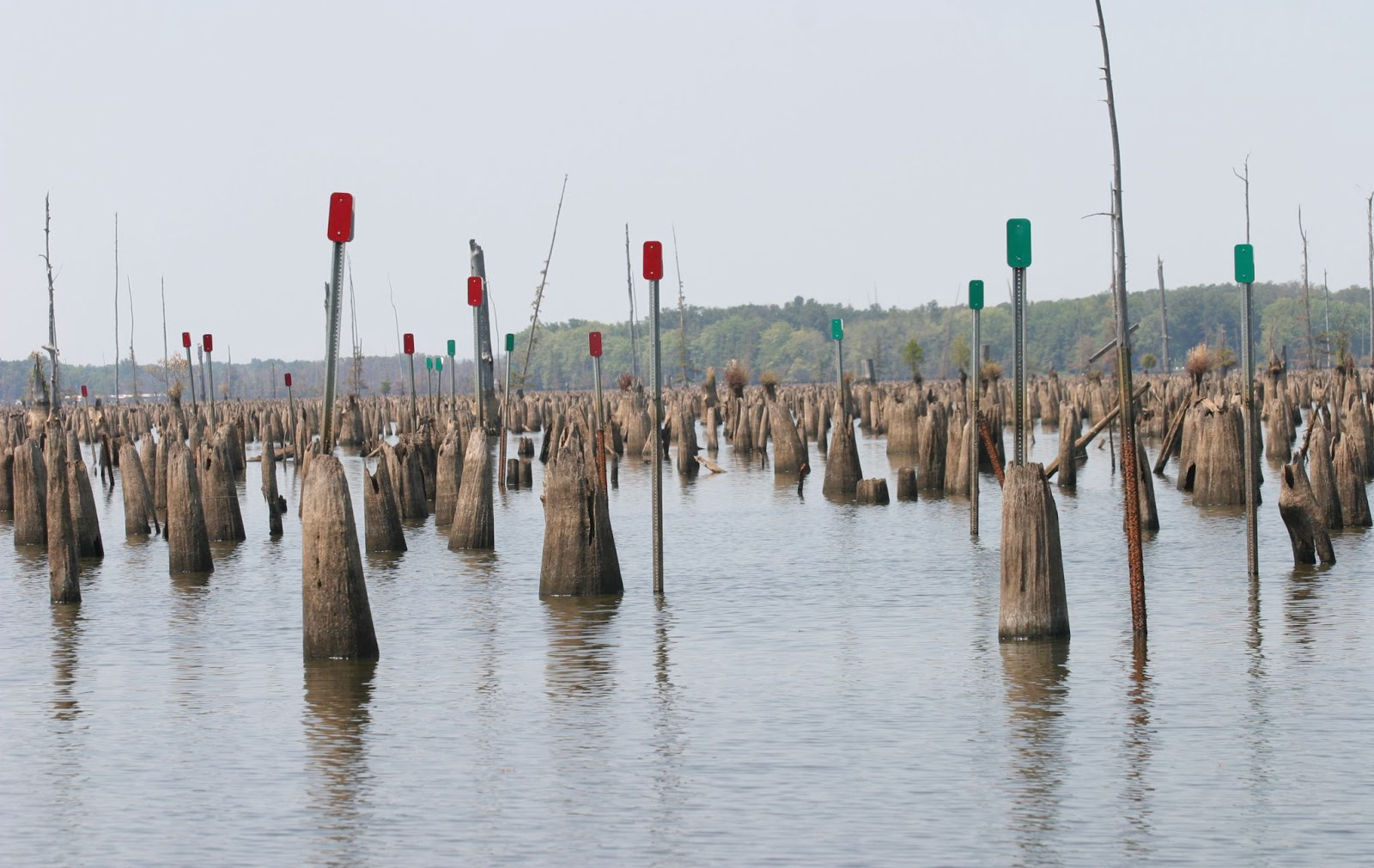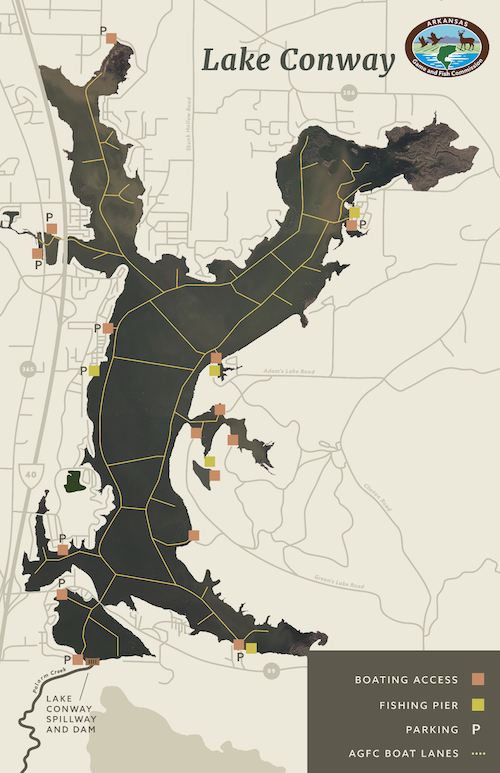

|
The Arkansas Game and Fish Commission received the first round of permits from the Army Corps of Engineers to begin construction work on Lake Conway’s dam and boat lanes Wednesday and will start work soon on these vital components to the lake renovation.
AGFC Assistant Chief of Construction Reid Phifer said the boat lane work will begin within the next month.
“We’ve already notified the contractor who secured the bid for the boat lanes, and they are mobilizing to begin work soon,” Phifer said. “He was able to get a good look at the work while the lake was low and make a proper bid for the effort. He can cut lanes when the water is lower and drive boat lane markers into the lakebed when the water is high, so we’re hoping he’s going to hit the ground running and stay busy regardless of water levels.”
Conway’s boat lanes will look much different when the project is complete. AGFC Fisheries District Supervisor Nick Feltz said the lanes will be 50 feet wide and marked with giant wooden poles driven into the lakebed. The finished project will expand the lake’s 23-mile boat lane system to nearly 30 miles of clear paths.
“The existing lanes are only 20 feet wide in some places, and even then have some stumps that could be under the surface if the water drops too low,” Feltz said. “The new lanes will be clear and wide enough for boats to be able to pass each other in the lanes at a safe speed.”
Boat lane locations will be modified, according to Feltz.
“We had two public meetings in 2024 to gather feedback on where we could improve the boat lane locations,” Feltz said. “Everyone was welcome, and we had quite a bit of participation. We focused on moving lanes to maximize straightness and water depth while minimizing the number of live cypress that need to be cut. We kept original lanes where we could, but moved some to gain some distance from the shoreline and boat docks and to minimize erosion. Several suggested lanes and lane removals from the public were added to the project, and we worked with anglers to prevent the lanes from running on top of known productive areas so boats could come off pad and then move into those areas slowly without creating a wake for kayak anglers and other anglers in these locations. Pierce Creek and Gold Creek are two areas where this public input was vital.”
The fisheries and construction teams haven’t been sitting on their hands during the permitting process, either. Three large lake cleanups were conducted and offered public participation. Although turnout was lower than anticipated, those who did help removed 40 tons of litter and debris from the lake and 25 tons of tires from 9 miles of the lake’s shoreline.
Gravel was distributed across the lake to create a hard bottom to improve spawning habitat for bream, bass and other sport fish.
Staff planted more than 600 cypress trees to add future habitat for the lake, and they hope to see them get a good start during low-water periods. Concrete culverts and more than 80 lean-to structures were placed to create complex cover and cavities for catfish to spawn and predator fish to use as ambush cover.
But the largest amount of work so far has been the result of Mother Nature and a little patience. During the last 18 months, some substantial changes have slowly occurred in the lakebed. Soil monitoring points throughout the lake were evaluated, and Feltz estimates a gain of roughly half a foot or more in portions of the lake.
“From September 2023 to August 2024, conservative estimates of soil consolidation averaged 6 inches in areas that are usually less than 4 feet deep,” Feltz said. “There are about 1,000 acres of the lake less than 4 feet deep, so we’re talking about 800,000 cubic yards of gained reservoir volume. Because of the stumps throughout the lake, removing 6 inches of soil across 1,000 acres would have been impractical, but even if it had been clear land we’d be looking at about $40 million of work that nature has accomplished during the first year of drying time.”
AGFC Deputy Director Ben Batten said he appreciates the patience anglers and lakeside landowners have shown so far in the permitting process and assures the public that the project is still on track.
“We are still well within the original 5-year timeline,” Batten said. “We knew the lake would fill and drain multiple times during the project, and we accounted for those sorts of delays. We also knew there would be parts of the lake that would never dry completely, particularly in the older ponds and creeks that existed prior to the lake’s construction.”
The AGFC is planning a public meeting for a more formal update as activity increases on the lakebed. Updates will be posted at the lake’s web page: www.agfc.com/lakeconway.